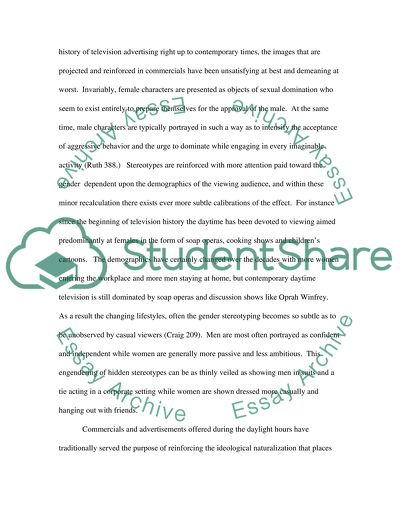Television Advertising and Gender Stereotypes Essay. Retrieved from https://studentshare.org/miscellaneous/1504349-television-advertising-and-gender-stereotypes
Television Advertising and Gender Stereotypes Essay. https://studentshare.org/miscellaneous/1504349-television-advertising-and-gender-stereotypes.


